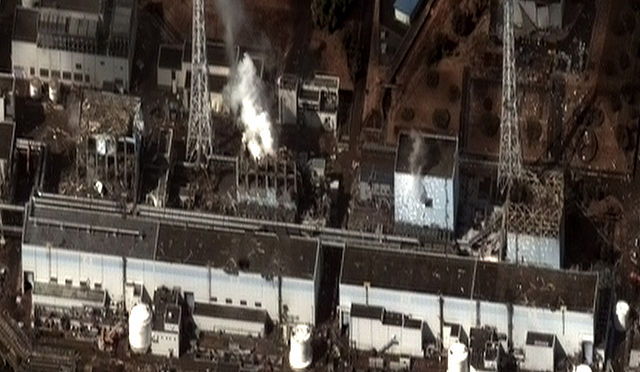Prior to the 2011 Tōhoku earthquake and tsunami, Japan had generated 30% of its electrical power from nuclear reactors and planned to increase that share to 40%. Nuclear power energy was a national strategic priority in Japan.
As of March 2020, of the 54 nuclear reactors in Japan, there were 42 operable reactors but only 9 reactors in 5 power plants were actually operating. A total of 24 reactors are scheduled for decommissioning or are in the process of being decommissioned. Others are in the process of being reactivated, or are undergoing modifications aimed to improve resiliency against natural disasters; Japan's 2030 energy goals posit that at least 33 will be reactivated by a later date.
The Onagawa Nuclear Power Plant, a 3-unit BWR site typical of Japan's nuclear plants.
The Kashiwazaki-Kariwa Nuclear Power Plant, a nuclear plant with seven units, the largest single nuclear power station in the world, was completely shut down for 21 months following an earthquake in 2007.
The 2011 Fukushima Daiichi nuclear disaster, the world's worst nuclear accident since the 1986 Chernobyl disaster, displaced 50,000 households after radioactivity leaked into the air, soil, and sea. Radiation checks led to bans on some shipments of vegetables and fish.
The Ikata Nuclear Power Plant.
Fukushima nuclear accident
The Fukushima nuclear accident was a major nuclear accident at the Fukushima Daiichi nuclear power plant in Ōkuma, Fukushima, Japan which began on March 11, 2011. The proximate cause of the accident was the 2011 Tōhoku earthquake and tsunami, which resulted in electrical grid failure and damaged nearly all of the power plant's backup energy sources. The subsequent inability to sufficiently cool reactors after shutdown compromised containment and resulted in the release of radioactive contaminants into the surrounding environment. The accident was rated seven on the INES by NISA, following a report by the JNES. It is regarded as the worst nuclear incident since the Chernobyl disaster in 1986, which was also rated a seven on the INES.
The four damaged reactor buildings (from left: Units 4, 3, 2, and 1) on 16 March 2011. Hydrogen-air explosions in Units 1, 3, and 4 caused structural damage.
Aerial view of the station in 1975, showing separation between units 5 and 6, and 1–4. Unit 6, completed in 1979, is seen under construction.
Unit 3 after the explosion on 15 March 2011.
The unit 4 reactor building after the explosion. The yellow object is the reactor's removed PCV head. The removed black RPV head with its lifting frame attached is to the left. Both had been removed to allow refueling at the time. The green gantry crane carries fuel between the RPV and the spent fuel pool.








